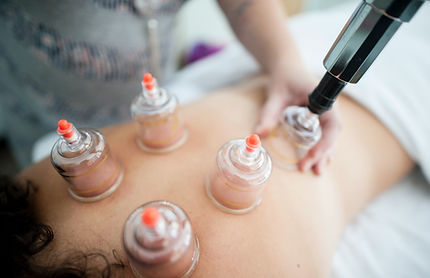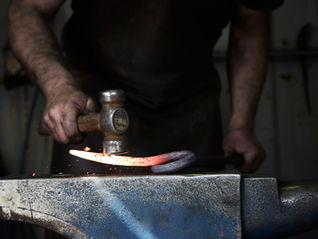
Cupping Therapy in Portland
Here at Portland's Inner Sanctuary Wellness, we offer traditional Chinese cupping therapy for the relief of muscle tension, stimulation of circulation, and support of your body's natural healing processes.
It's been practiced in various forms for over 3,500 years, appearing in ancient Egyptian and Chinese medical practices, used for the facilitation of deep physical and energetic release. This makes cupping a time-tested modality for treating chronic pain, enhancing athletic recovery, or emotional disturbance, a gentle yet powerful pathway to greater ease and aliveness.


What Is Cupping Therapy?
Cupping therapy is an old therapy that uses suction to make a pulling force upwards on the skin and superficial muscle layers.
The treatment promotes new blood flow, disperses stagnation, and assists in detoxification. Cupping is also referred to as a reverse massage. Instead of pushing pressure into the muscles, it pulls tissue upwards gently.
This technique has been used for thousands of years in traditional Chinese, Middle Eastern, and Eastern European medicine. We use cupping on its own, and also in combination with acupuncture or bodywork, at Inner Sanctuary Wellness.
What Does Cupping Help With?
Cupping has many benefits and helps with a multitude of conditions:
Chronic Back, Neck & Shoulder Pain
Cupping loosens tight spots, increases blood flow, and relieves deep, stubborn pain—especially in areas that hold long-term tension.
Stress-Related Muscle Tightness
Feeling the weight of the week in your body? Cupping helps melt away stress held in your muscles.
Tension Headaches & Migraines
By relaxing muscles and improving circulation, cupping can ease the pressure that often triggers head pain.
Athletic Recovery & Fatigue
Sore from training or overuse? Cupping speeds recovery by flushing out lactic acid and recharging tired muscles.
Poor Circulation
If your hands or feet run cold or feel sluggish, cupping boosts healthy blood flow where it’s needed most.
Detox & Lymph Support
Cupping stimulates the body’s natural detox system, helping move stagnant fluids and support lymphatic drainage.
Respiratory Relief
For asthma, chest tightness, or lingering congestion, cupping can help open things up and support easier breathing.
How it works
The suction pulls stuck fluids, tension, and waste toward the surface so your body can clear them out naturally.


Who Can Benefit from Cupping
Cupping is safe and beneficial to most individuals, including:
-
Athletes in need of quicker recovery
-
Office workers with tense shoulders or upper back
-
Individuals experiencing tension due to stress or anxiety
-
Individuals with slow digestion or circulation problems
-
Clients looking for natural, drug-free relief from pain
We tailor every session to your body and your comfort level. First-time cupping or prior experience, your treatment will be gentle, precise, and supportive.
What to Expect During a Cupping Session
Each session begins with a conversation. We want to know your goals, whether you're recovering from an injury or just unwinding.
-
This is what a typical cupping session could involve:
-
A quick intake and physical assessment
-
Glass, silicone, or plastic cups applied to specific locations
-
Suction generated with fire cupping or a vacuum pump
-
Cups left in place for several minutes or slowly glided over the skin
Most say the feeling is relaxing and relieving, accompanied by a little tightness that instantly feels comfortable. Afterward, one will probably feel looser, more mobile, and deeply relaxed.


Will I Get Marks from Cupping
One of the most recognizable aspects of cupping is the circular marks it can leave on the skin. These are not bruises but temporary discolorations caused by blood being drawn to the surface. The color and intensity of the marks can indicate the level of stagnation in the tissue.
Marks typically fade within a few days and are rarely painful. We always explain the process and aftercare before beginning treatment, so you feel confident and prepared.
Cupping and Athletic Performance
Many athletes in Portland use cupping as part of their recovery and training routines.
It supports:
-
Faster recovery after intense workouts
-
Reduction in delayed onset muscle soreness (DOMS)
-
Prevention of repetitive strain injuries
Whether you're a casual runner, a cyclist, or a professional athlete, cupping can help you stay loose, energized, and injury-resistant.

Frequently asked questions
Contact Us
Let us know how we can help you
Opening Hours
Mon - Fri
Saturday
Sunday
9:00 am – 8:00 pm
9:00 am – 7:00 pm
closed















